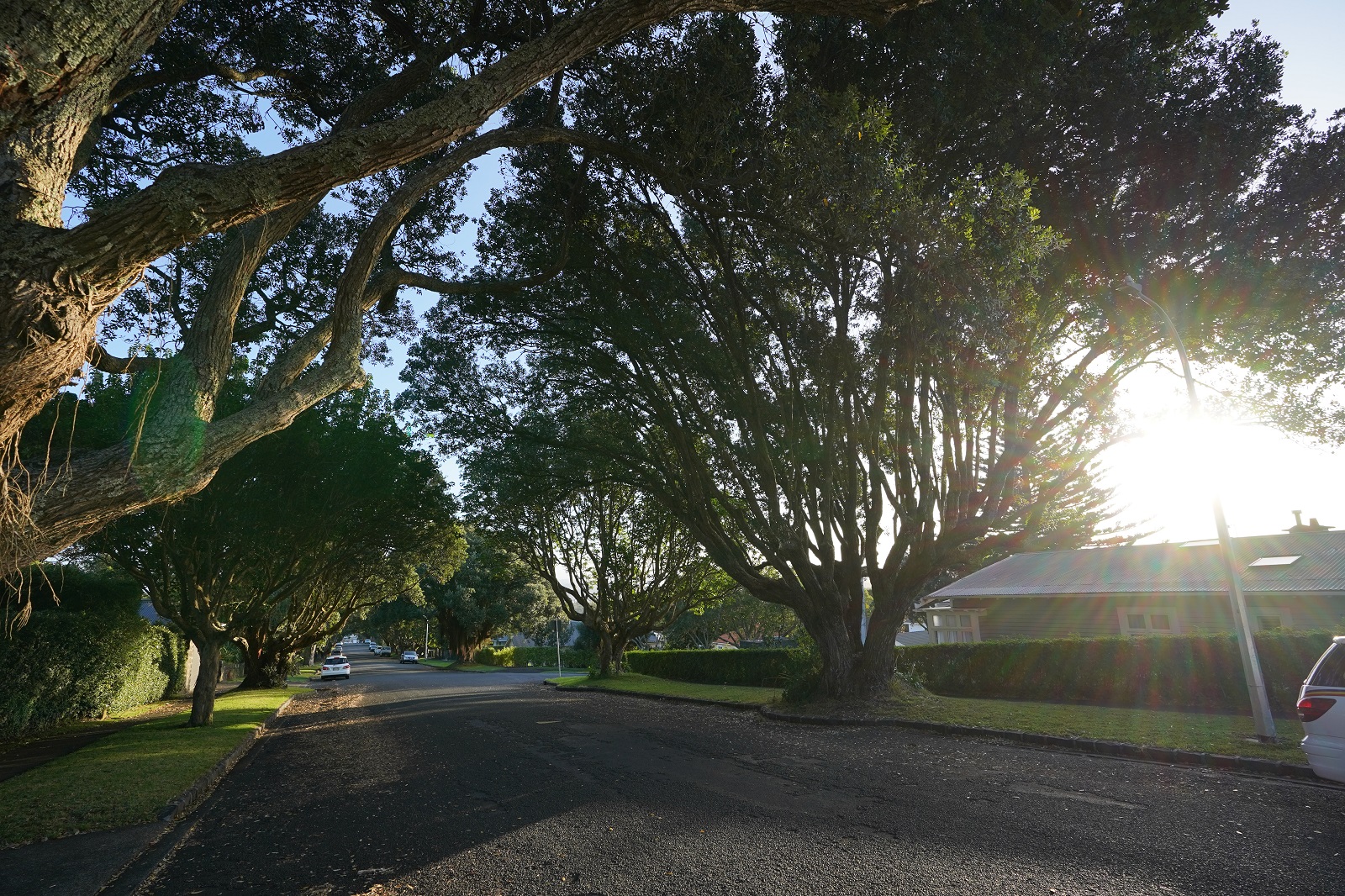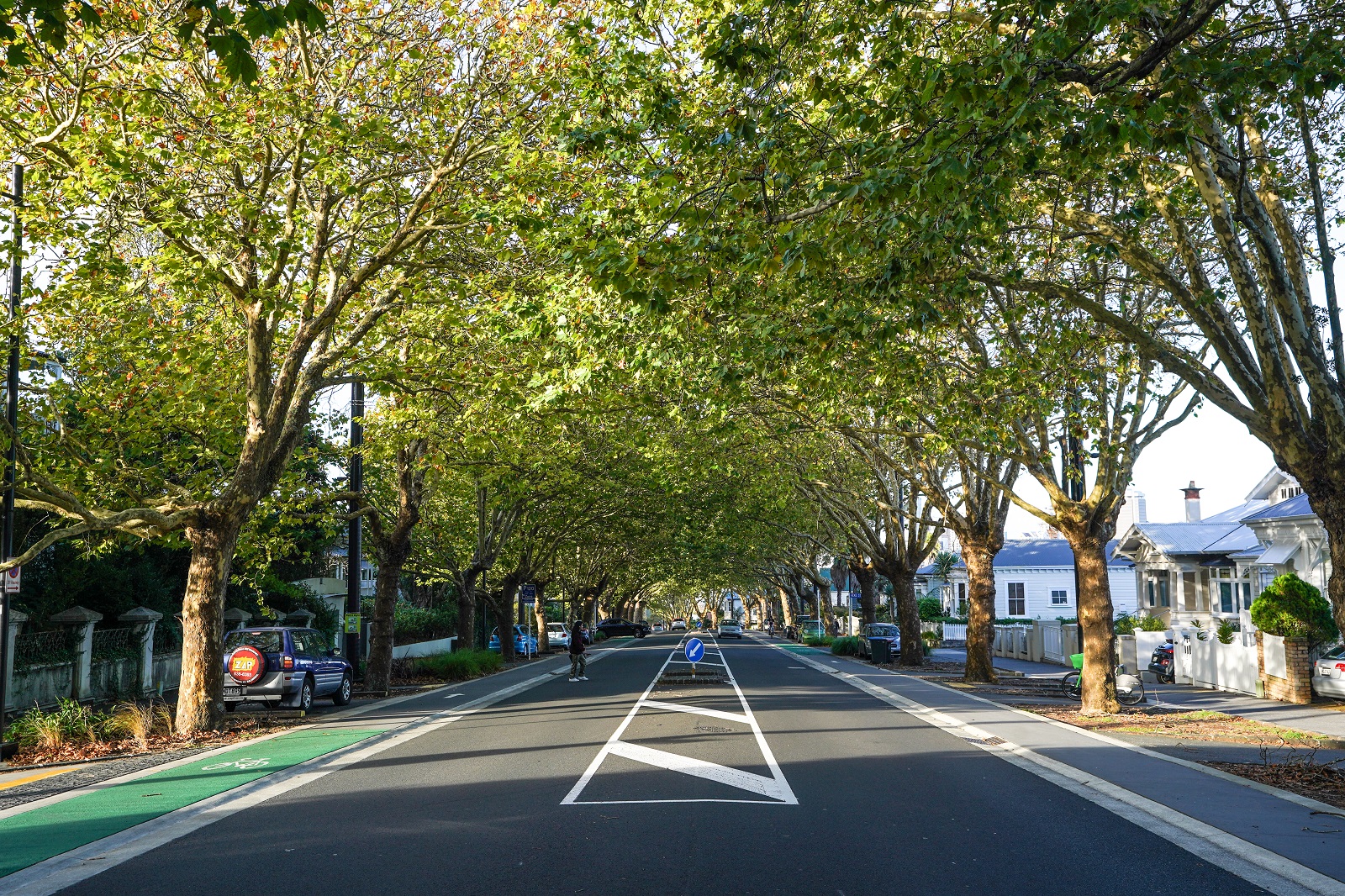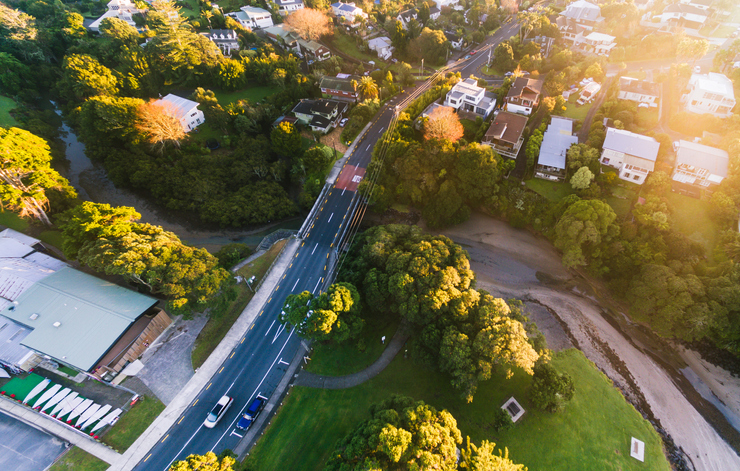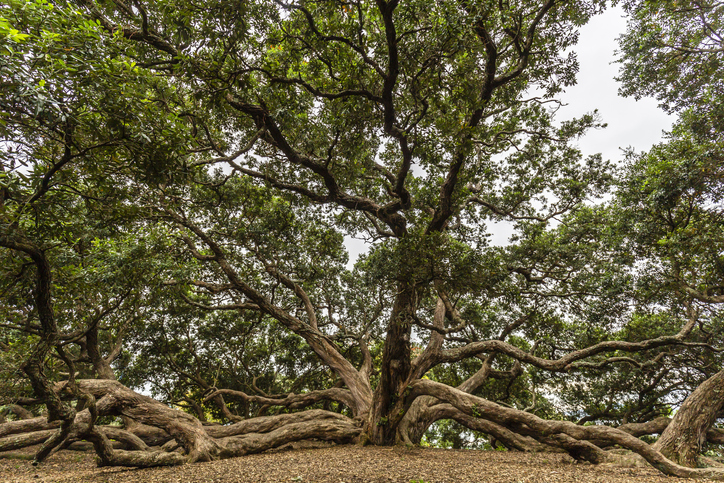If you’re near a tree right now, you should probably give it a hug – or at the very least say thank you. Without trees we wouldn’t survive. These ultimate ecosystem regulators take carbon dioxide from the atmosphere and convert it into oxygen, while also removing pollutants from the air.
But trees do so much more for us than just absorbing pollutants through the tiny openings in their leaves and stabilising the climate by removing carbon dioxide from the air. These leafy multitaskers enhance our wellbeing by improving our mental and physical health, making our communities safer and future-proofing our cities.
We’re spoilt for choice when it comes to bushwalks and regional parks - there are more than 4000 local and regional parks across the region - but the majority of Aucklanders live in urban environments and can’t access these places on a daily basis. Nature shouldn’t just be a destination we visit occasionally – we need it around us all the time. That means we need trees everywhere: in our streets, parks, playgrounds, shopping areas, places of work and around our homes.
Auckland Council’s Urban Ngahere (Forest) Strategy is making that happen. By recognising the multiple benefits of trees – and growing and protecting them – we can make sure our region is blanketed in these green wellbeing boosters for future generations to enjoy.
Free therapy
While it seems like a no-brainer that trees improve our happiness, numerous scientific studies have proved that it’s true. A 2020 study of almost 10,000 residents in Leipzig, Germany, carried out by the German Centre for Integrated Biodiversity Research, found that doctors prescribed fewer antidepressants for people living within 100m of trees. Trees improve our mental health, making us feel calmer by lowering our levels of the stress hormone cortisol, helping decrease negative thoughts, reducing levels of depression and increasing life satisfaction.
Not only does the Urban Ngahere (Forest) Strategy aim to increase the tree canopy to 30 per cent across Auckland, it has a target of 15 per cent within each local board area to make sure that Aucklanders across the region can access the benefits that trees provide. Currently there is an 18 per cent average across the region.

Natural health providers
A study based on 31,000 residents of Toronto, Canada, which was published in the scientific journal Nature in 2015, found that “having 10 more trees in a city block, on average, improves health perception in ways comparable to an increase in annual personal income of $10,000 … or being seven years younger.”
Streets lined with older, larger trees are particularly valuable because they create even more green space – take for example the leafy tunnel created by the canopies of the London plane trees that were planted on Greys Avenue 150 years ago and on Franklin Road 100 years ago.
People are also more likely to head outside and exercise in tree-lined spaces, and research has shown a correlation between better heart health and improved longevity for people who live in leafy neighbourhoods. While an article on green environments and cardiovascular health published in a medical journal in 2020 concluded that much more research needed to be done in this field, it supported the idea that this area of enquiry “remains promising”, and “even if greenness decreases CVD risk by a few per cent, its public health benefits are likely to be significant, given the high incidence of the disease”. So prescribe yourself a dose of nature.

Brain boosters
Trees are vital for children’s development too. A study from the Barcelona Institute for Global Health found that children growing up in close proximity to green spaces had better attention and memory, higher levels of academic achievement and less behavioural issues compared to those growing up in predominantly paved spaces.
Researchers compared grassy spaces to tree-filled spaces, and while grassy spaces contributed to positive outcomes, trees came out on top.
Tāmaki Makaurau is packed with local parks where children can have wonderful encounters with living giants that have been benefiting our communities for generations. Some standout examples include the awe-inspiring Moreton Bay fig at Monte Cecilia Park in Hillsborough (thought to be the largest in the country), or Te Ha, a 180-year-old pōhutukawa at Dove Myer Robinson Park, which is considered to be the country’s oldest urban pōhutukawa specimen. It can be easily identified by its many outstretched horizontal branches.

Growing connections
Trees foster a cultural connection to place and history, particularly native forest, which is important to mātauranga Māori (knowledge and understanding). The mauri (life force) of our ngāhere nurtures our ecosystem, including us.
Your nearest stand of ancient native forest may not be as far away as you think. Smith’s Bush in Northcote has some of the oldest native bush on the North Shore. Stand beneath the cathedral grove of giant pūriri and kahikatea and totara and remind yourself that you are part of this ecosystem too.

They’re so cool
Tree canopies protect us from harmful UV rays, helping to reduce our risk of skin cancers. By creating shade and through the process of transpiration – where trees “sweat” water vapour through the pores in their leaves – they also help mitigate the heat island effect where hard surfaces such as concrete and buildings increase the overall temperature of our cities.
With Auckland’s climate predicted to increase by 1.5-3.75 degrees Celsius by the end of the century (depending on how successful we are at reducing carbon emissions globally), we need more tree cover to cool the city down and make our communities liveable.
Connect to nature and hug a tree, or even better, plant a tree today – it will make you feel happier, calmer, more focused, healthier, younger, and cooler.


